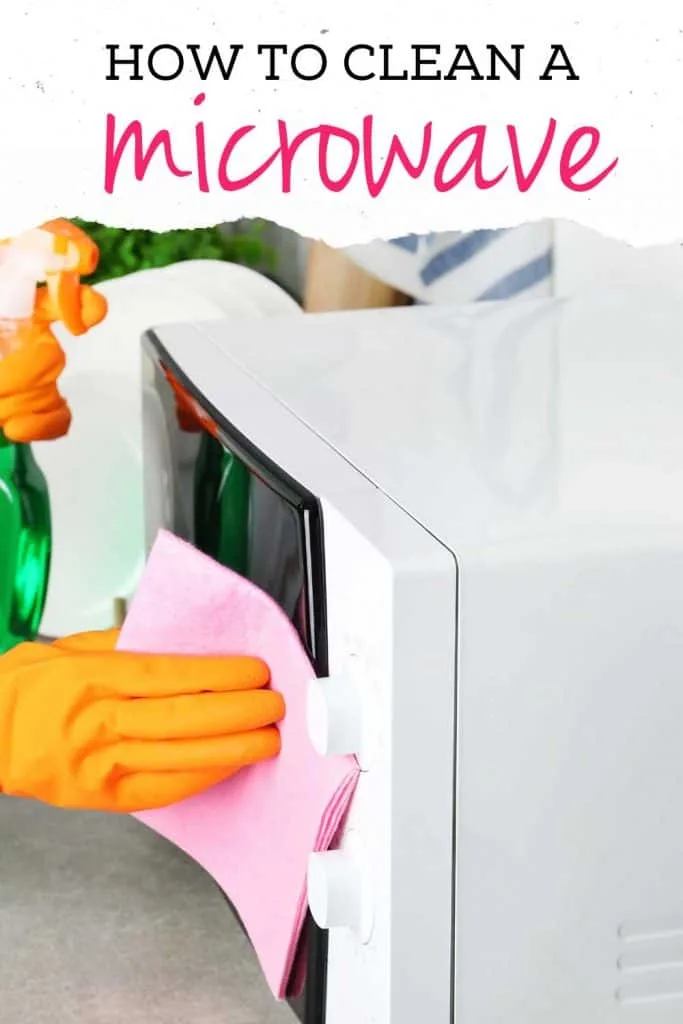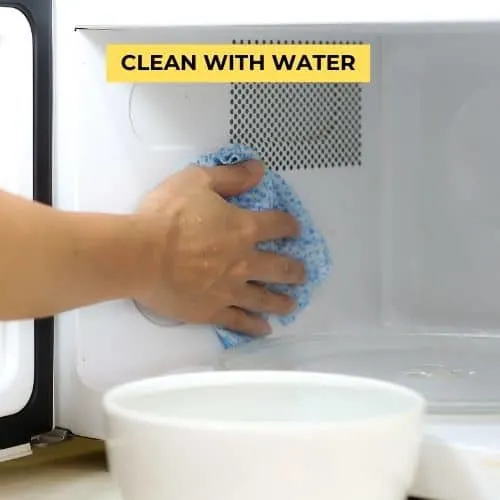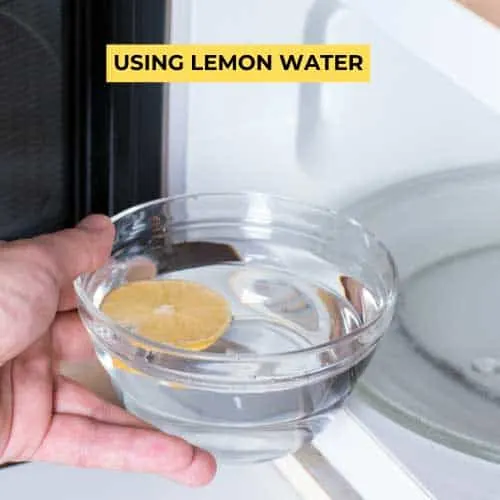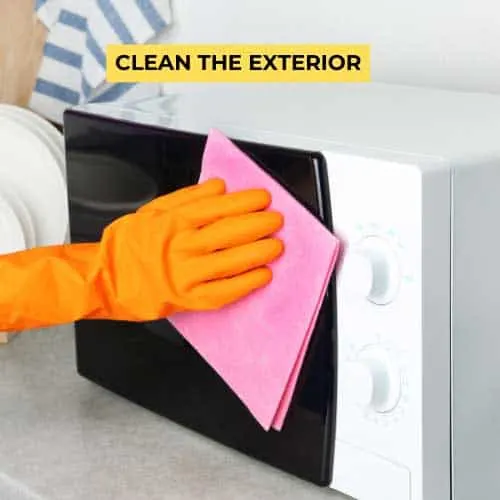Are you wondering how to clean your microwave?
Cleaning a microwave isn’t the most fun task to do in the kitchen. But sometimes needs must.
Did somebody use the microwave but didn’t clean it right away? Or maybe you used it yourself but have put off cleaning it for some time?
Chances are it is already harbouring dried, caked-on remains of what you’ve eaten over the past several days. Food that has splashed and splattered inside the microwave quickly turns gooey and crusty after just days, sometimes even hours.
Days-old pasta sauce, mashed potatoes, butter, even the kids’ science experiment that exploded and burned into a nasty, smelly mess.
If you haven’t given your microwave a deep clean lately, try peering inside and inspecting all the nooks and crannies.
It might just be time to get cleaning.
1. Cleaning the interior
There are a few natural and inexpensive cleaning agents that you can use as alternatives to bleach and synthetic chemicals. These simple household ingredients will sanitize, degrease and remove stains from your microwave just as effectively as any commercial cleaner.
But their advantage is that they’re safer to use and are much gentler on the interior surface of your appliance. They also won’t leave any chemical residues that could make your food taste and smell unpleasant.
Plain Water
Water is of course the simplest, cheapest and most easily available cleaning agent that you can use. The mere combination of water and heat will soften and loosen stuck-on gunk inside your microwave.
Just place a wet rag, or a handful of wet paper towels inside the unit and set the cooking time for 3 to 5 minutes, or until steam is produced. You could opt to use a small microwave-safe bowl for this, filling it to half with water and soaking the rag or paper towels in it, then heating it until it boils and steams.
Keep the microwave door closed for another 5 minutes as it cools down, allowing the steam to do its magic. Then open the door and remove the bowl and turntable plate. Be careful to use oven gloves or a tea towel – those things are hot! You can wash the plate in the sink like any regular dish.
Then, using a soft towel or sponge, wipe the interiors of the microwave. You can choose to use the same rag or paper towels you soaked earlier, as long as they’re cool enough to the touch. Still, you may want to use gloves for it.
You’ll find that all the grease and grime will easily come off without any need for scrubbing.
If stuff is still hard and stuck-on, try redoing the process. Run the microwave for another 5 minutes – the additional steam should finish the job.
Vinegar
Alternatively, you can use half a cup of water and half a cup of white vinegar in a microwave-safe bowl.
As above, set the cooking time to 5 minutes, then allow it to steam for another 3 to 5. Remove the bowl then wipe clean with a paper towel or cloth.
Vinegar works as a disinfectant because of its high acidic content. You may also consider using it in a spray bottle, especially if the grime in the microwave hasn’t dried up or crusted yet. Spray the vinegar-water mixture then let it sit for a few minutes before wiping down.
Baking Soda
Put 2 tablespoons of baking soda and half a cup of water in a microwave-safe bowl. Stir the solution until the baking soda is completely dissolved, then run the microwave for 3 minutes until it steams. The baking soda solution will kill all the unpleasant smells inside the microwave. Wipe down with a clean cloth.
Lemon
The citric acid in lemons, limes, and oranges will not only degrease, disinfect and remove stains, it will also make your appliance sparkle and shine. Best of all, these fruits will leave not just your microwave smelling awesome, but your entire kitchen as well!
First, cut your lemon in half. Place both halves inside a microwave-safe bowl with a cup of water. Microwave it on high for 5 minutes, then let it steep and cool for another 5. As above, wipe the interior of your appliance clean.
2. Clean the exteriors
Dip your sponge into the cooled water and vinegar, water and lemon, or water and baking soda solution you used above. Wipe the outer walls of your microwave. Pay attention to the buttons and dials, as well as the rubber gasket around the door. Don’t forget the top and underside of the microwave, too.
For heavy build-up, or smudges of grease, you can use a mild mixture of water and dish soap. Afterwards, rinse it off by following through with a clean, damp cloth.
3. Use a microwave cover regularly
What you can do to limit splatters – and save time and effort from frequent deep cleaning in the long run – is to just cover your food every time you microwave. Use paper towels, a paper plate, or another microwave-safe bowl or plate to cover any dish you’re heating.
There are commercial plate covers or splatter guards that you can also purchase in stores like Argos or Wilko, or at Amazon for a low price. They’re made of PP plastic or silicone and come in particularly large sizes – very handy when you’re reheating large amounts of food in bulky containers.
The great thing about these splatter guards is that they have vents that promote airflow. These prevent liquid from condensing, spilling and splattering all over the inside of your microwave.
Any mess, if at all, would be limited to just the underside of the cover and on the turntable tray.
Splatter guards will also keep the heat contained in your dishes, keeping your food moist.
There are even models that come with magnetic tops that stick to the ceiling of the microwave when not in use.
Ultimately, washing a splatter guard would be much simpler than having to give your microwave a major cleaning every so often.




